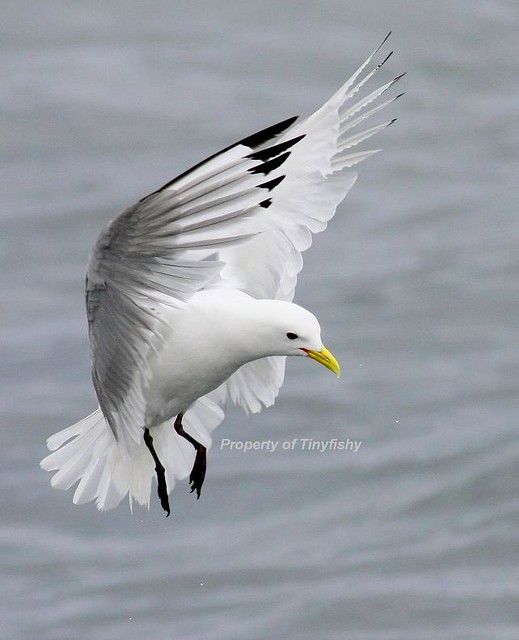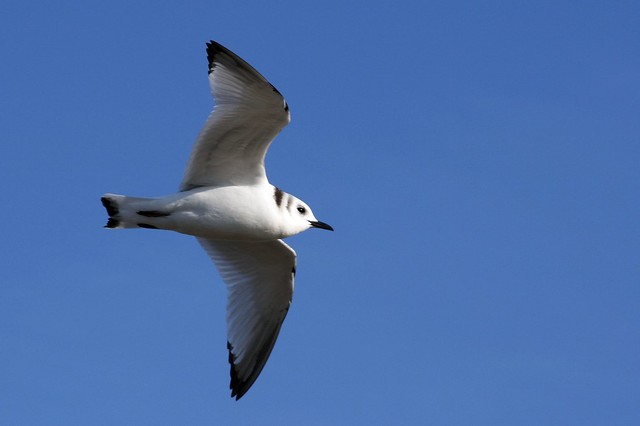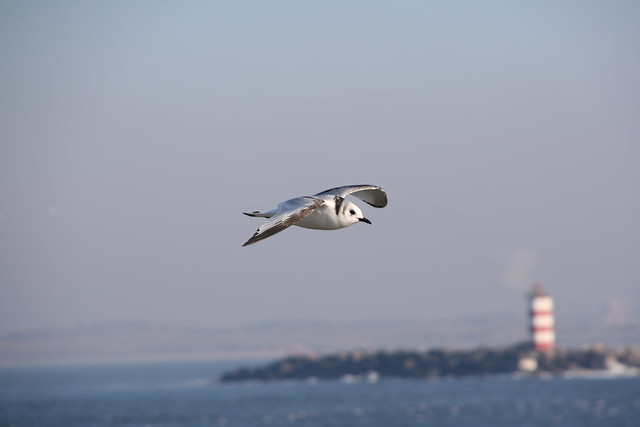Black-legged Kittiwake

This week we've added another cute bird to Birdorable: the Black-legged Kittiwake. The above photo of cliffs in Ireland shows an adult Kittiwake on the left and a juvenile on the right. Juvenile individuals have black markings on the wings, neck and head. There are actually two races of Black-legged Kittiwake: one in the North Atlantic ocean and another in the North Pacific ocean.
The first one, which is common throughout Europe and the east coast of North America, has only three normal toes. Hence its latin name Rissa tridactyla, which means "three-toed". Its hind toe is reduced to a tiny bump. Kittiwakes spend most of their lives out at sea and come ashore only to breed. They actually seldom walk, so its legs are much shorter than those of other gulls. And who needs a hind toe if you hardly ever walk, right?

We often saw Black-legged Kittiwakes on the North Sea coast when we lived in the Netherlands and I always thought they were particularly cute. Here's a juvenile that we saw flying around at IJmuiden, a coastal town west of Amsterdam:


Kittiwakes breed in large colonies on rocky cliffs and is very noisy on the breeding ground, as is evident from the video below. They are capable of utilizing the sheerest of vertical cliffs as their nesting site.
The Birdorable Kittiwake is available on t-shirts and other apparel. This is our totally cute version of the Black-legged Kittiwake!





Comments
Leave a comment
Thank you!